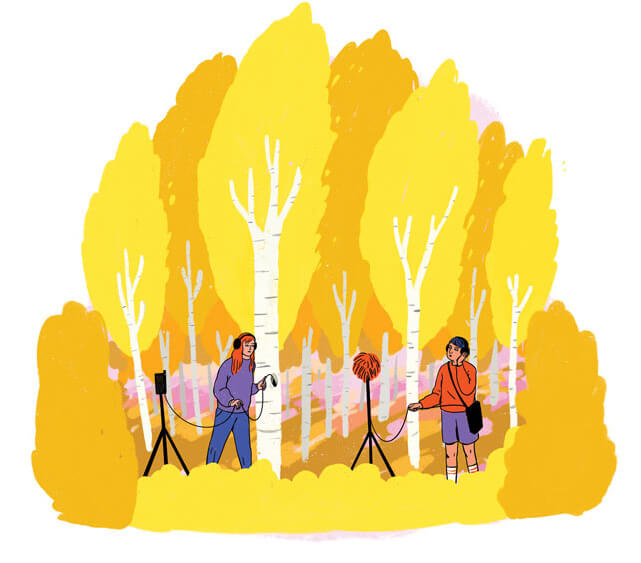
The 184th Meeting of the Acoustical Society of America
Date: May 8–12, 2023
Location: Chicago Downtown Magnificent Mile Hotel
2022 Attendees: 1,003
2023 Attendees: 1,350
Website: acousticalsociety.org
Illustration by Carmen Segovia
The Acoustical Society of America’s (ASA) meeting attendees are on the same wavelength. Established in 1928 by a group of 40 scientists and engineers who met at Bell Telephone Laboratories in New York over a shared interest in acoustics — defined as the science that deals with the production, control, transmission, reception, and effects of sound — ASA has held meetings twice a year since 1929. Initial membership totaled 450 acousticians; today academic, government employee, early-career acoustician, and practitioner consultant members number more than 6,000.
“The years after World War II marked an increase in research in all fields of acoustics,” said Elaine Moran, ASA’s director of operations. The society’s growth continued through the following decades, she said, “with focus shifting to non-military applications of acoustics to improving quality of life, advances in biomedical ultrasound treatments and devices, and the study of the environment.”
Make Some Noise
Sessions at the 184th ASA Meeting covered diverse areas of interest, reflected in these tracks: Climate Change and Sound: How the Sound of the Planet Reflects the Health of the Planet; Artificial Intelligence and Machine Learning; and Infusing Social Justice in Speech and Hearing Acoustics Pedagogy: Principles and Case Studies. Presentations within these tracks included:
- Small but Mighty: Insect-Inspired Microphones
- Achieving Linguistic Justice for African American English
- Hey Siri, Can You Hear Me?
Nature Sounds
The wide breadth of topics range from underwater acoustics and animal bioacoustics to speech and hearing, Moran said. From there, she said, topics drill down to subspecialties, “such as the study of climate change, marine and land mammals, studies to advance the treatment of diseases, cochlear implants, and planetary acoustics.”
One session, “Acoustic Ecology and Biological Soundscapes,” featured a presentation by sound artist Jeff Rice that analyzed the sounds of Utah’s Pando Aspen Grove — the largest tree in the world — whose root system spreads out over 100 acres. Using different microphones, including hydro- phones, Rice captured the sound of this massive underground system in a noninvasive manner.
Attendance at ASA, Moran said, “is a necessity, to learn about the latest research and advances in all fields of acoustics.”
Casey Gale is managing editor at Convene.
Visit the Archive
- Read past installments of There’s a Meeting For That
